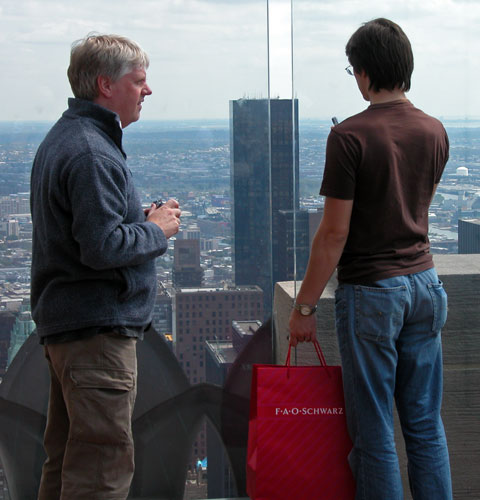So far I’ve written about the first couple of stages of my proof of concept idea about setting up a media PC under Linux on a thinkpad. First, there was using my own laptop to check some functionality out such as using an infra-red remote control. Then, I moved on to setting up another laptop with a fresh Linux installation with the prime purpose of being a media centre. This has now got to such a stage, and good enough, that I now have the laptop at home; but there are more things to think about in this media PC lark, especially under Linux, thank you may think at first…..
A nice perk about working at IBM is that we can buy old, unused, thinkpads from the company. These are, of course, second hand and considered too old for good reuse with an employee. Before anybody asks, no they’re not super cheap, and no I can’t get you one! So, the T23 I have been using so far, has now arrived home as my own property having purchased it from IBM – hence the choice for using an older machine if you wondered in an earlier post.
As I said, there is a lot to think about in the configuration and what you want out of a media PC. Fedora Linux doesn’t make it especially easy since a lot of the multi-media capabilities are removed for legal reasons such as MP3 support and encoded DVD reading. All these have to be added in as extras after the initial install which means you have to work out where to get them from and add any sources into your add/remove application programs. For those in the know, I mean sorting out all the yum repositories. This can get quite tricky, especially given the digging around required to find local mirrors to speed things up a bit. I think I’ve got there now though with a combination of the Fedora and extra repositories as well as a couple of the community based ones which are essential to easy Linux usage these days – what would we do without all those people putting stuff together for us? On a completely different note: don’t forget to give something back to the community!
Having arrived home with the laptop. The first thing to do is to get it connected to the Internet. I tried without success for an entire evening to set up the wireless adapter to connect to the access point, no joy. At this point, I’m thinking it’s a good thing I know a trick or two with Linux. I noticed that Fedora seem to ship an updated kernel that includes a wireless driver which has been compiled with different wireless extensions than the tool used to configure the driver – a problem I think! Once I made this small, but signifiant (and difficult to notice) discovery, setting up wireless was a breeze as usual. The solution, downgrade your kernel to the standard Fedora version so you go back to the old wireless driver version and things start to work again. This is most definitely a bug in the way Fedora are handling their code updates right now. Of course, I’ll be feeding this back – a small way of contributing back into the community!
I’m using KDE, which for those not familiar with Linux is a fairly MS Windows-like graphical interface onto a Linux desktop. It comes with a whole bunch of handy utilities that I’ve never really bothered using before in all my years with Linux. Things such as GUI screen resizing applets, and applets for switching between TV and laptop screens will be invaluable to one of the primary aims for this project – the wife acceptance factor! This stuff really has to be easy to use otherwise I stand not a chance of any longevity with this being in my living room.
I still have a few things left to work out with this idea yet, I have not tested the S-Video link to the TV, and I need to start indexing music collections over the network into Amarok probably via Samba. Neither of these should present a problem, however, if I fail it’s pretty much game over. In good hackety-hack style I’ve not written a single thing down about what/how I’ve done all this (except this blog), my hope is when all is installed and running well I will write a page about what to do and how to do it. I may even try reproducing the whole thing on another laptop!







